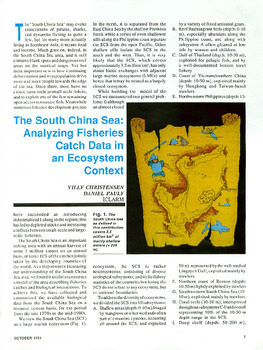The South China Sea: analyzing fisheries catch data in an ecosystem context

Citation
Christensen, V.; Pauly, D. (1991). The South China Sea: analyzing fisheries catch data in an ecosystem context. NAGA 14 (4): 7-9
The South China Sea is an important fishing area with an annual harvest of some 5 million tonnes, or 10% of the catches jointly taken by the developing nations of the world. Details are given of a model of the area describing fisheries catches and biological interactions. The area, viewed as a large marine ecosystem, was divided into 10 subsystems; each subsystem was then linked with adjacent subsystems by predatory links, and detritus flows. An analysis was then made of catch statistics for each of the subsystems. It is believed that if all systems could be harvested at around the highest efficiency, an additional 5-6 million tonnes could be taken annually from the South China Sea; however, more refined analyses are needed to further investigate these possibilities. If linked with careful studies of the economic and human aspects of fishing, such analyses will provide guidelines for integrated fisheries management advice.
Permalink
Date Available
Type
Publisher
Countries
Copyright
CC BY 4.0
Research Themes
Language